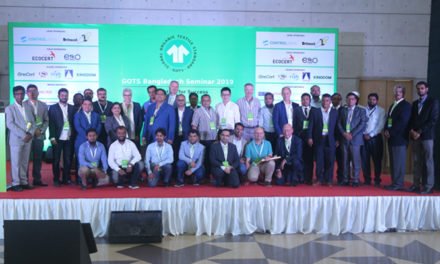 Kenya’s textile industry players are hopeful that the proposals to revise freight charges downwards will improve the country’s competitiveness in the global stage. The players, in a draft of proposals that they have submitted to the ministry of trade also want the government to ease the export procedure for the textile and apparel industry. Kenya has found it difficult to compete as taxes and rising labour costs have driven prices up with Kenya Association of Manufacturers revealing that compared to USA and Bangladesh the country is 15-20 times more expensive.
Kenya’s textile industry players are hopeful that the proposals to revise freight charges downwards will improve the country’s competitiveness in the global stage. The players, in a draft of proposals that they have submitted to the ministry of trade also want the government to ease the export procedure for the textile and apparel industry. Kenya has found it difficult to compete as taxes and rising labour costs have driven prices up with Kenya Association of Manufacturers revealing that compared to USA and Bangladesh the country is 15-20 times more expensive.
KAM Board Director, Pankaj Bedi told The Star that alongside high-energy prices, the industry is currently grappling with a skills gap, which is driving the costs up. “Manufacturers in the EPZ sub-sector need to train and build their skills. It takes 2-3 years to fully train an employee, which drives up the cost of doing business,” said Bedi. The director says that in spite of the challenges being faced, the textile industry is exporting goods worth Sh34 billion annually.
“Our land rate duty cost is actually higher than other countries like US and Bangladesh. Meaning we can’t compete with them. We have submitted our proposals to the cabinet secretary for a review,” added Bedi.
Currently textile is the leading export Kenya to the USA with a kilo of cotton currently being bought at Sh360, despite a massive shortage of cotton. In an effort to improve this attractiveness KAM has partnered with IDH Kenya to drive the competitiveness of the Textile and Apparel Industry in Kenya. The partnership shall be driven through the 3-year Sustainability for Competitiveness Project.
IDH Country Director, Jenny Lofbom said the two entities should leverage on experiences from more developed countries to drive sustainability for competitiveness. “Sustainability is everyone’s responsibility. By working together, we shall build an inclusive and sustainable supply chain in the Textile and Apparel sector, from farm to fashion,” said Lofbom.
The industry players project that the new plan, will put the sector firmly on a growth path and incrementally grow it over the next seven years. Textile has been earmarked among the key drivers that will up the contribution of the manufacturing sector to the country’s gross domestic product (GDP) to eventually hit 20 percent.
“Addressing the cost of compliance, the technical capacity to conform to compliance requirements and making the compliance regime accessible to all is critical in enabling Kenya increase and diversify its exports to the global markets,” said the Principal Secretary for State Department of Industry, Juma Mukhwana.
Textile apparel sector remains one of the biggest supply chains in the world, and a huge market opportunity for Kenya. Today the Kenya is the largest exporter under the African Growth and Opportunity Act (AGOA) to the US. That is about the third top export, overtaking coffee, which is fourth at $500 million and has 52,000 jobs.






















